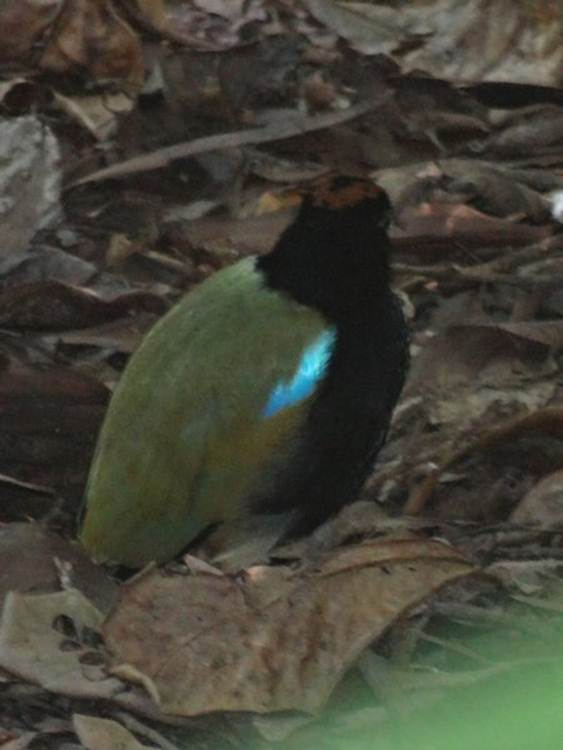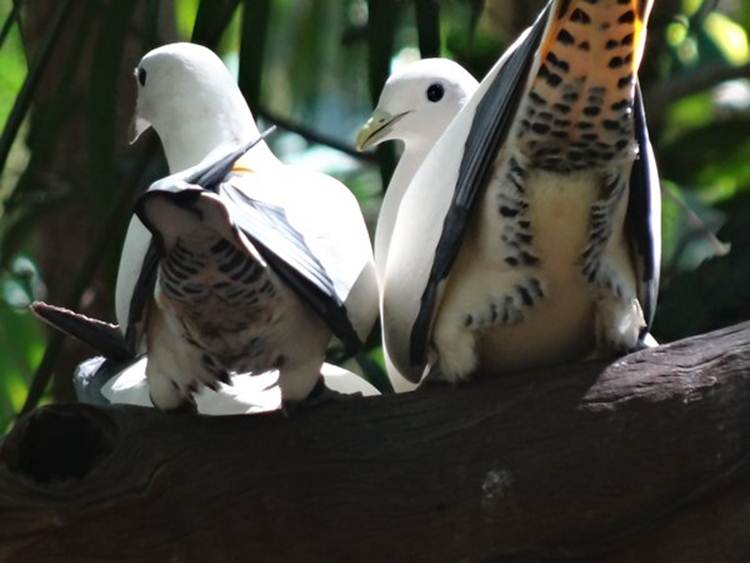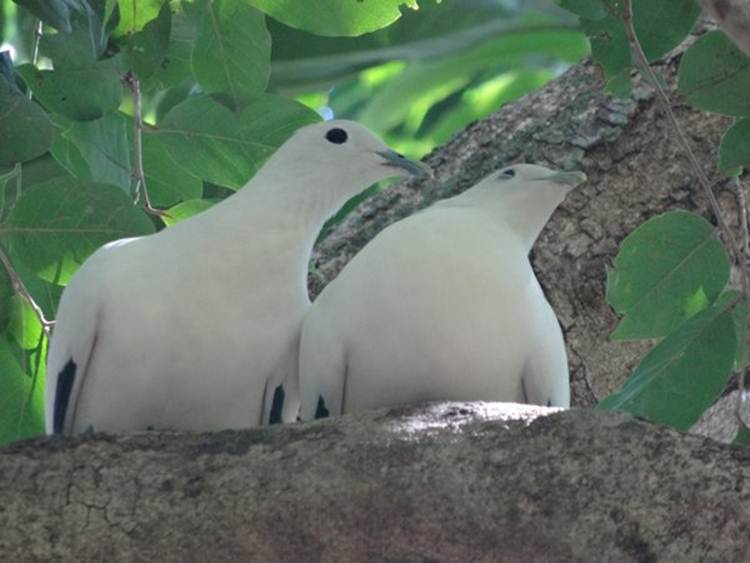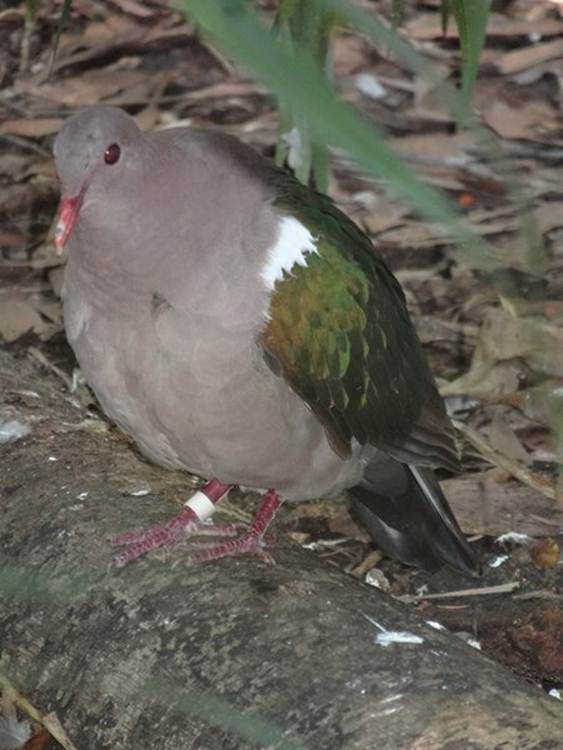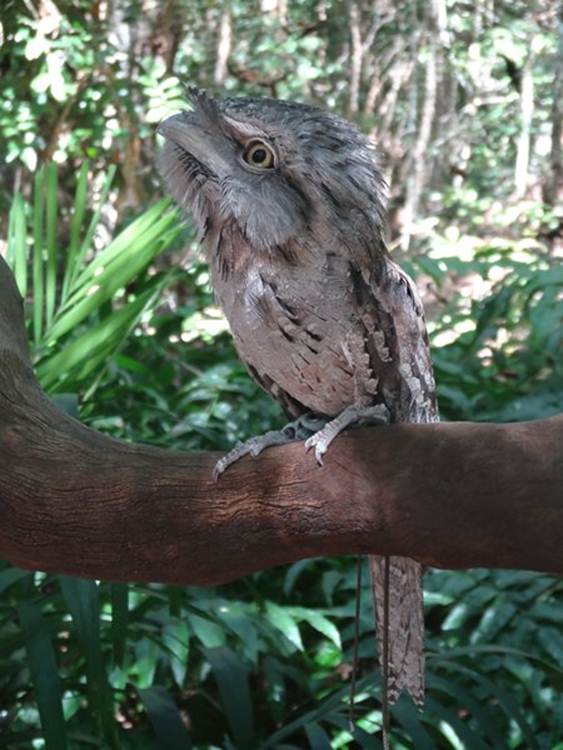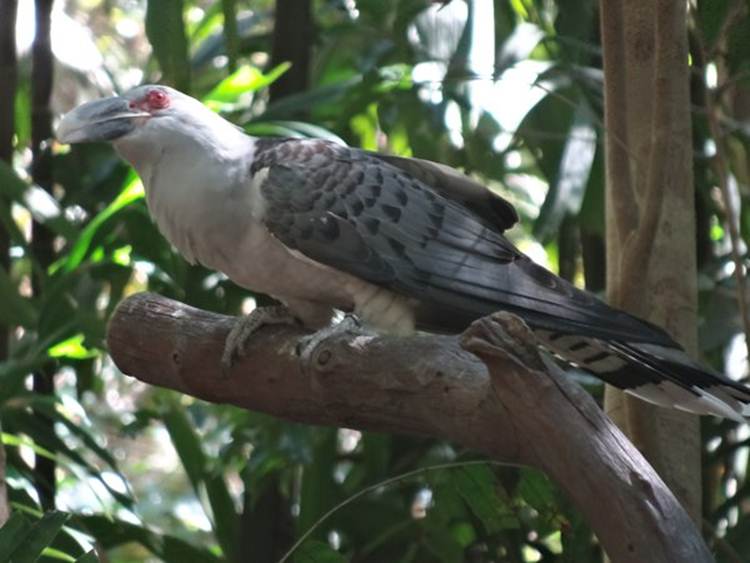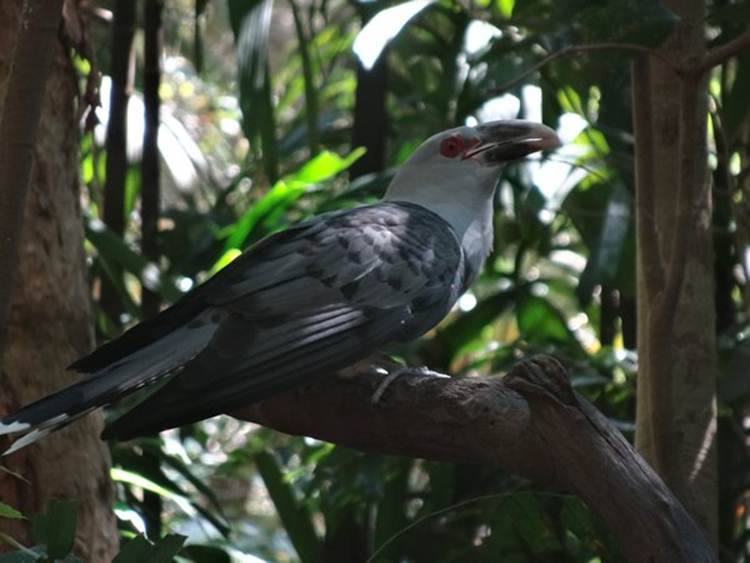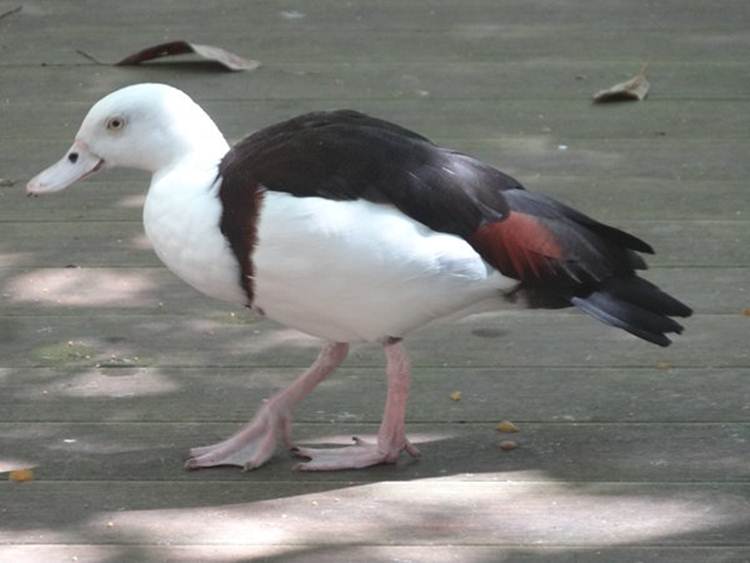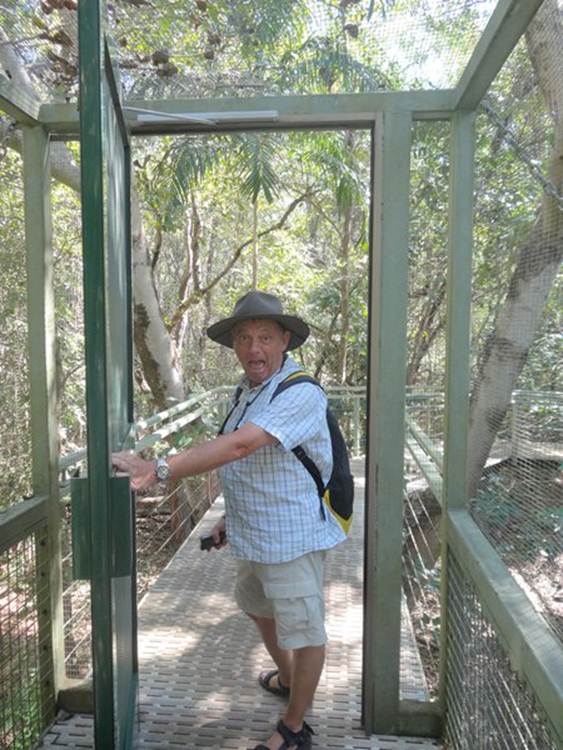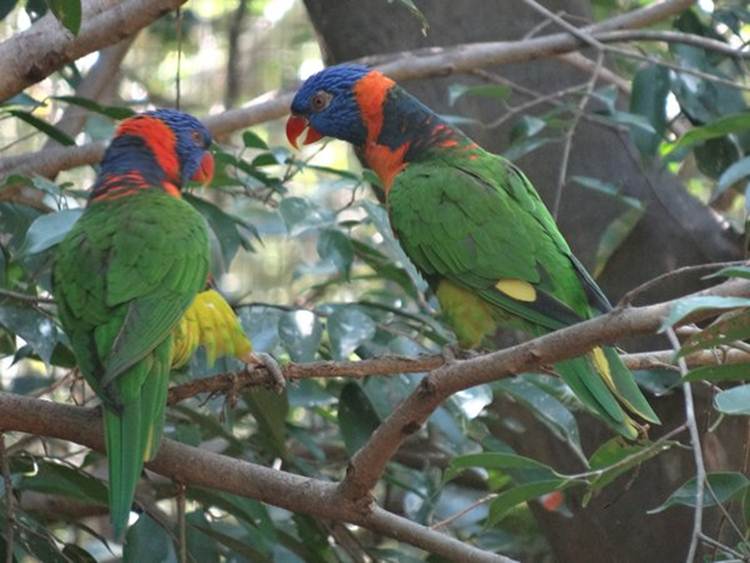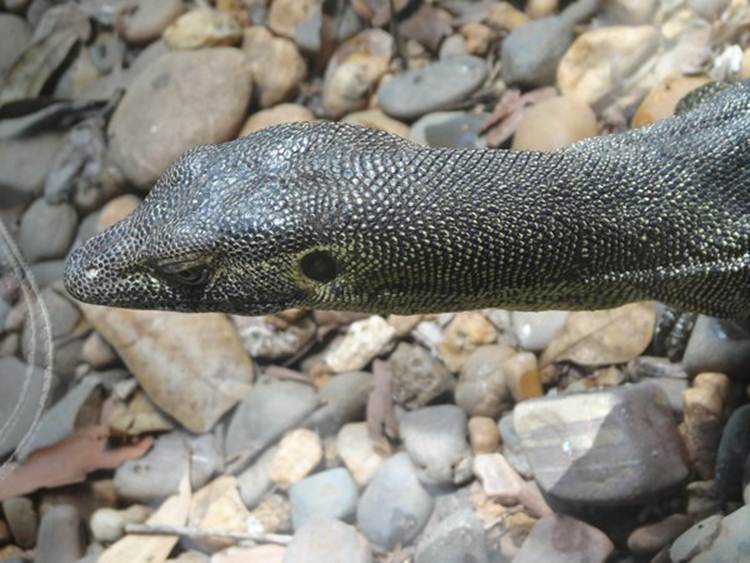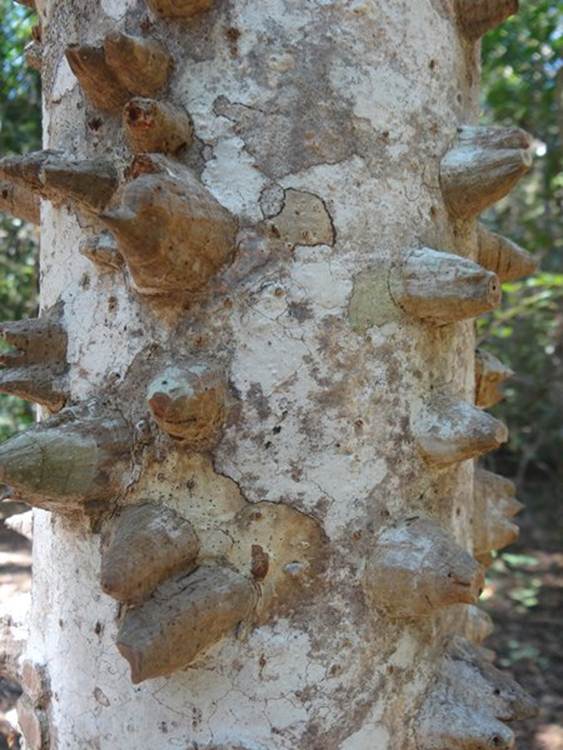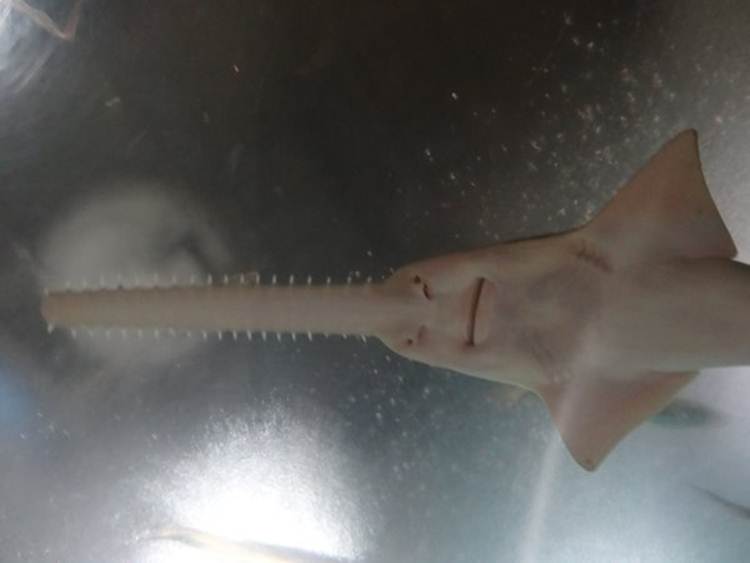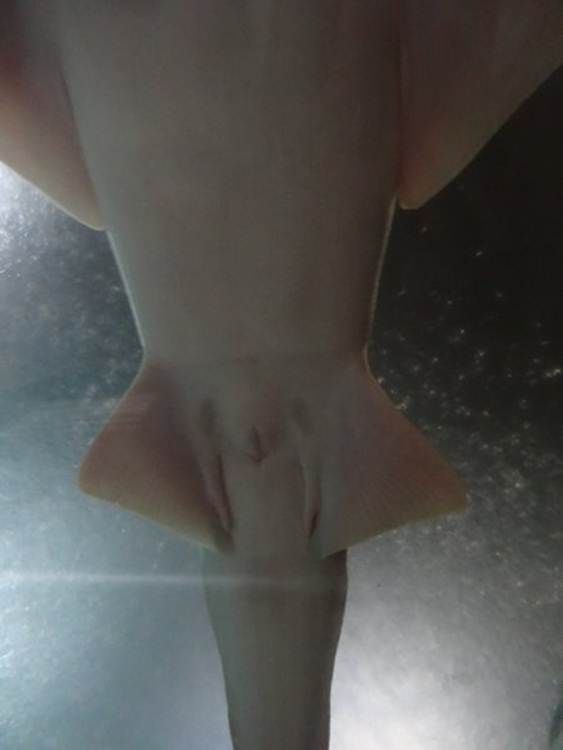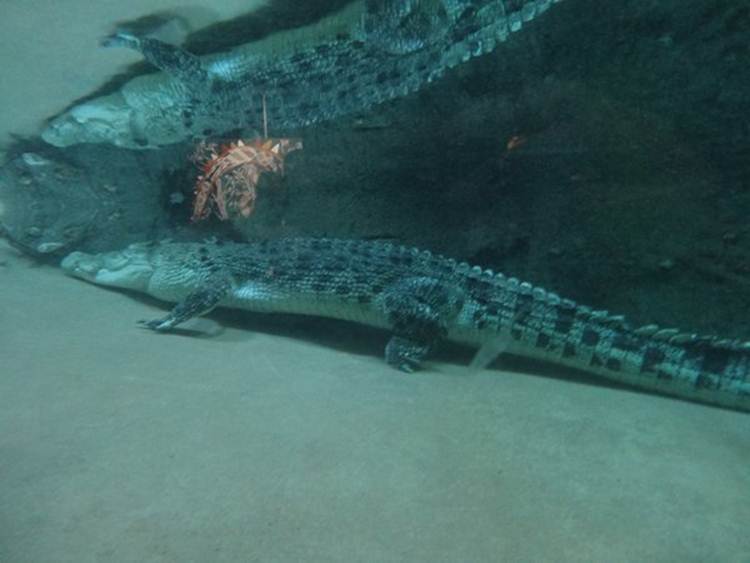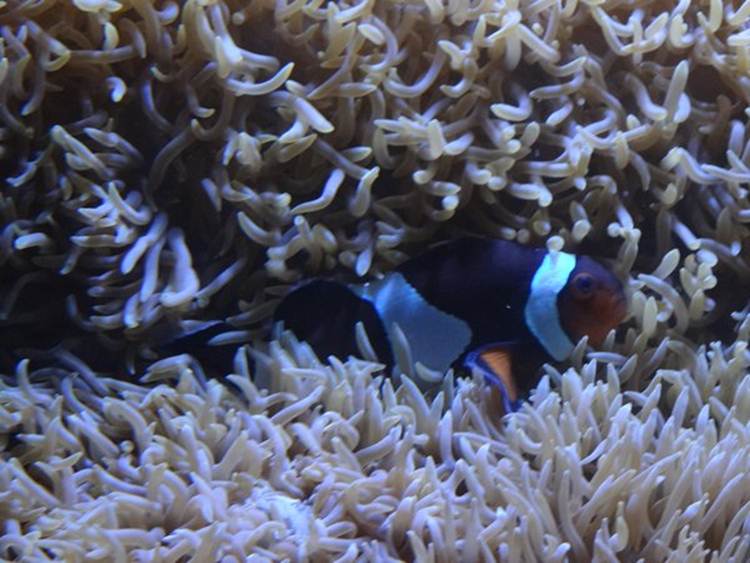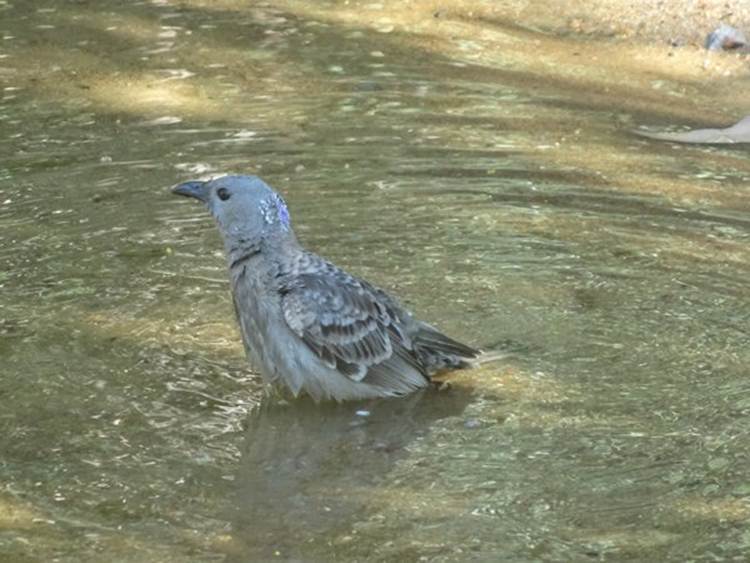Northern Territory Wildlife Park - 2

And now for some more birds….Not a particularly good shot of the rainbow pitta (Pitta iris). A dumpy little thing. Like thrushes they often use a rock as an anvil to smash open snail shells.
These are pied imperial pigeons (Ducula bicolor), locals still call them the Torres Strait pigeons (or Torries). Stick to those Latin names. Bums away.
From the front. These are the guys that love the fruits of the Carpentaria palms and weeping figs. Great seed dispersers!
Seen these Emerald ground doves (Chalcophaps indica) wandering in the forest floor, blend in really well despite the green feathers being iridescent, or maybe because of that – you think it’s sunlight flickering. Not seen them fly at all, but guess they must. They spend most of their time foraging on the ground!
A tawny frogmouth (Podargus strigoides) – my favourite bird in Australia. These are nocturnal but you can sometimes see them in a camouflage pose on a tree limb. They mimic a broken branch, yet to see one in the wild yet. We keep looking though.
This is another really difficult bird to spot – the channel-billed cuckoo (Scythrops novaehollandiae). The largest of the cuckoos and looks like a hornbill with that massive beak. Only see them in the wet season, good job this is an aviary then, spending the rest of the year in New Guinea and Indonesia – can’t wait.
It’s bill is massive. Look at that bright red eye and feathers. Loves to eat plump ripe figs – certainly got the beak, and I guess mouth, for it. Just like all other cuckoos, they lays their eggs in another birds nest and let them raise their chicks.
The radjah shelduck (Tadorna radjah). Males and females look the same but the males have a different call. They nest high up in tree hollows and the young have to parachute to the ground.
Guess the movie..
A couple of red-collared or rainbow lorikeets (Trichoglossus haematodus). These two were crooning big time, side stepping down the branch, or maybe they were just jawing.
Not a snake a very big lizard.
This is a variety of Kapok tree (Bombax ceiba). Got these large conical spines on the trunk. Apparently the woody fruit contains seeds embedded in woolly fibre. Aboriginals used the wool to decorate their bodies. The wool from the Java Kapok tree was used to stuff mattresses before foam was invented.
A sawfish – these are endangered now. Their ‘saw’ gets caught up in nets.
And another
A male then…
A salty underwater
Back leg which is webbed.
The false anemone fish (Amphiprion ocellaris) – this black form is only found around Darwin, usually it’s orange. They form lifelong pairs. The female lays her eggs near the anemone and the pair then guard and clean the eggs until they hatch.
This is a great bower bird (Chlamydera nuchalis). The ruffled feathers on the back of its head when raised are pink.
|
